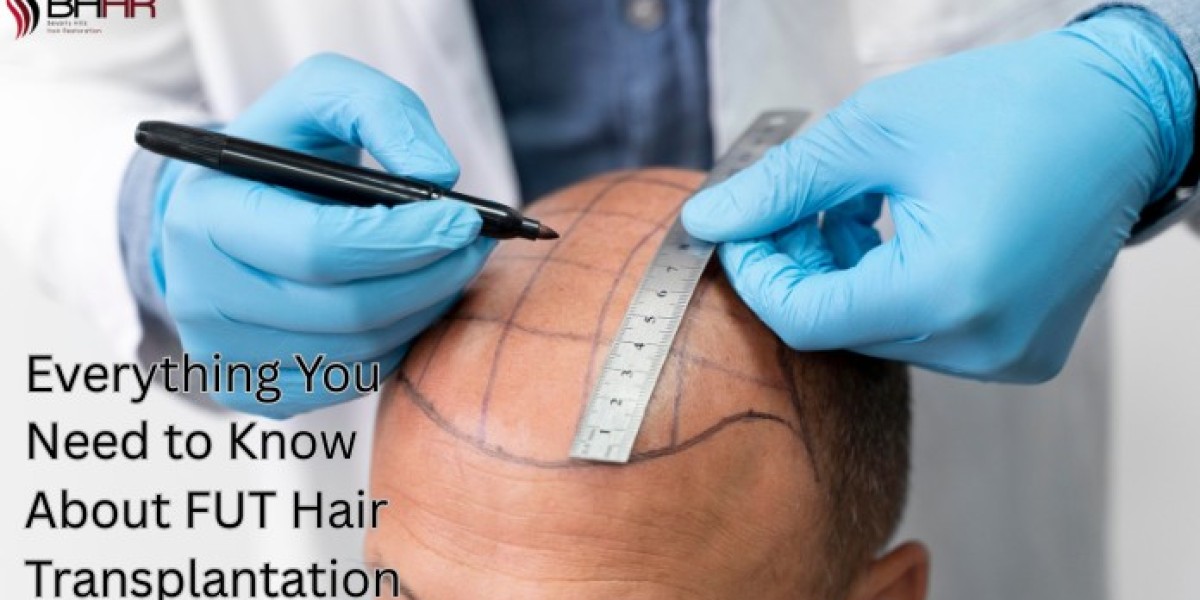When it comes to permanent hair restoration solutions, FUT hair transplantation has long been a trusted procedure for people seeking fuller and natural-looking hair. While newer techniques like FUE (Follicular Unit Extraction) have become popular, FUT hair transplantation remains highly effective for many people, especially those who require extensive coverage. In this guide, we’ll explore what FUT hair transplantation involves, its benefits, potential drawbacks, and why it may be the right choice for your hair restoration journey.
What is FUT Hair Transplantation?
FUT hair transplantation, short for Follicular Unit Transplantation, is a popular surgical method used to restore hair in areas impacted by thinning or baldness. In this procedure, the doctor carefully removes a narrow strip of skin from the back or sides of your head, where hair naturally grows thicker. This strip is then separated into tiny, natural groups of hair follicles under a microscope. Each of these small follicle units is gently placed into the areas where hair is sparse or missing, helping new, natural-looking hair to grow over time. One of the major advantages of FUT hair transplantation is that it allows a large number of hair grafts to be moved in just one session. This makes it a great option for individuals who want fuller coverage in a shorter period without needing multiple procedures.
The FUT Hair Transplantation Procedure: Step-by-Step
Understanding the steps involved in FUT hair transplantation can help ease any worries about the procedure:
Consultation & Planning: A thorough consultation is conducted to evaluate your hair loss pattern & determine the suitability of FUT hair transplantation.
Donor Area Preparation: The surgeon trims a section of the donor area to remove a strip of scalp with healthy hair follicles.
Graft Dissection: Skilled technicians meticulously divide the strip into individual follicular units using a microscope.
Recipient Site Creation: Tiny incisions are created in the balding areas to receive the grafts. The placement of these grafts is crucial to achieving a natural look.
Implantation: The extracted follicles are carefully inserted into the prepared sites. The surgeon ensures the right angle, depth, and distribution for the best results.
Recovery: After the FUT hair transplantation procedure, the donor area is stitched and will heal over time, leaving a thin linear scar that can be concealed by surrounding hair.
Advantages of FUT Hair Transplantation
There are several reasons why individuals opt for FUT hair transplantation over other hair restoration techniques:
Higher Graft Yield: FUT hair transplantation allows for the extraction of more hair follicles in one session, making it cost-effective for larger balding areas.
Endless Results: The transplanted hair is resistant to DHT, ensuring permanent and natural-looking outcomes.
Efficient for Extensive Hair Loss: If you require a significant number of grafts, FUT hair transplantation is an excellent option compared to FUE.
Less Shaving Required: Unlike FUE, the donor area does not need to be fully shaved, making the procedure more discreet for many patients.
Potential Drawbacks of FUT Hair Transplantation
Despite its benefits, FUT hair transplantation has some limitations:
Linear Scar: A thin scar may remain on the donor site, although it is usually hidden by surrounding hair.
Longer Recovery Time: The healing process can take longer than FUE because of the stitches required in the donor area.
Post-Surgery Discomfort: Some patients may experience mild discomfort or tightness in the donor area for a few weeks after the procedure.
FUT Hair Transplantation vs. FUE: Which One is Better?
Many patients often wonder which is better: FUT hair transplantation or FUE. The truth is, the right choice depends on your personal goals and the pattern of your hair loss. FUE involves taking out individual hair follicles, while FUT hair transplantation allows for the collection of a larger number of grafts in just one session, which makes it a great option for those needing more extensive coverage. Also, if you prefer not to shave the entire donor area, FUT hair transplantation can be a more discreet and convenient solution.
Why Choose Us for FUT Hair Transplantation?
When considering FUT hair transplantation, selecting the right clinic is critical to ensure safe and natural results. At Beverly Hills Hair Restoration in Palm Desert, we specialise in providing personalised and high-quality hair transplant procedures. Our experienced surgeons utilise advanced techniques to ensure maximum graft survival, natural hairline design, and minimal scarring. With thousands of successful FUT hair transplantation cases, we have become a trusted name in the industry, committed to transforming lives by restoring confidence through hair restoration..
Aftercare and Recovery Tips for FUT Hair Transplantation
Post-procedure maintenance is essential for the success of FUT hair transplantation. Here are some recovery tips:
Avoid Physical Strain: Refrain from heavy workouts or strenuous movements for at least two weeks post-surgery.
Gentle Hair Washing: Use mild shampoo and wash your hair gently to avoid disturbing the newly implanted grafts.
Follow-up Appointments: Routine check-ups with your surgeon help monitor healing progress and address any concerns.
Protect from Sun Exposure: The scalp should be shielded from direct sunlight to prevent damage and aid healing.
Following these tips will ensure the success and longevity of your FUT hair transplantation results.
Final Thoughts
FUT hair transplantation remains a trusted and effective solution for people struggling with major hair thinning or bald spots. One of the key reasons many patients choose this method is its ability to deliver a high number of grafts in just a single session, helping to create fuller, natural-looking results that last. While it's true that a little recovery time and some minor scarring can occur, most people find these to be small trade-offs when weighed against the long-term benefits of the procedure. If you’re seriously considering FUT hair transplantation, it’s essential to sit down with a qualified and experienced specialist.








